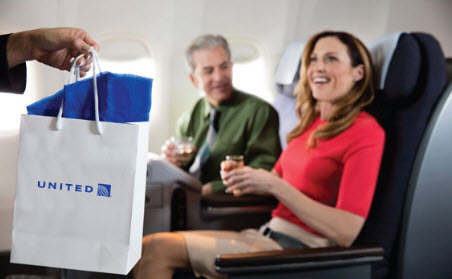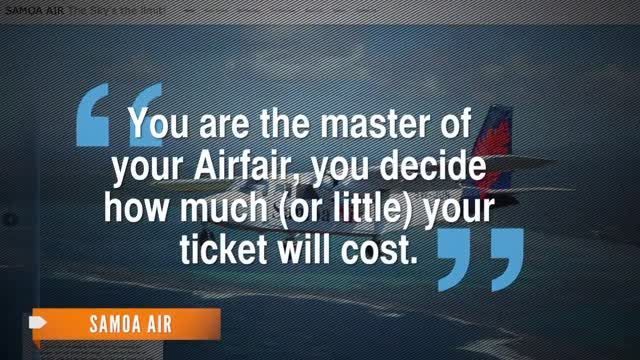When you’re an airline (or any large-scale entity that serves the public), every little bit helps the bottom line.
Is anybody else old enough to remember yogurt cartons that were 8 ounces? Full half-gallon containers of ice cream? When did metal toys begin to be made out of plastic? When did hotels stop changing the sheets every day?
Those little changes here and there, be it shrinking a package but charging the same amount, or using cheaper materials, or cutting corners by stopping a service that’s conveniently also good for the environment, are small ways that companies can save more money. The way airlines in particular do it is pretty fascinating…
Saving fuel, one olive at a time
I once read that when an airline removed just one olive from each of its in-flight salads in the 1980s, it wound up saving them $55,000 a year. Besides not having to buy as many olives, they also didn’t have to deal with as much weight per flight. Not that several dozen olives per flight cost all that much, but when you’re talking about a big flying tube that can use up to 1 gallon of fuel per second, every little bit really does help.

Nowadays, of course, it helps immensely that airlines don’t give full meals to most passengers anymore; you don’t have to worry about olives in salads when only the 20 people in First Class are getting a salad, and that’s only if it’s a longer flight. But there are lots of other ways that corners have been cut…
Creative cuts
- When Qantas introduced its first non-stop commercial flight between Perth and London (17 hours), they introduced all kinds of ways to be lighter. New glassware, plates, cutlery and linen on board were reduced 11% in weight. They also decreased the weight of their trolley carts for international flights from 25kg to just 18kg. After these new items were rolled out to all their aircraft, Qantas saved about 535,000 kg (1.2 million pounds) per year on fuel.
- When they still had them, American Airlines started using lighter paper for its in-flight magazines, ultimately saving about 1 ounce per magazine. Multiply that by every seat in every plane in their fleet, and they saved about $417,000 a year.
- Air Canada got permission from aviation authorities to remove life vests from some of its aircraft and replace them with lighter flotation devices (as long as the flight didn’t go more than 50 miles offshore).
- Japan Airlines suspended beer sales on domestic flights (except in first class), for a savings of 210 pounds per flight.
- Delta saved $500,000 a year by slicing the limes for its soft drinks and alcoholic beverages into 16 slices instead of 10, which decreased how many limes they needed to bring per flight.
- Stopping Duty-Free sales saved United about 1.4 million gallons of fuel per year, which was worth more than what they were making on the Duty-Free items.

It’s not just individual airlines, either – lots of airlines are doing lots of little (and not so little) things to cut weight:
- In-flight entertainment, seats and washrooms, whether new or retrofitted, are lighter than in the past, which saves lots of gallons of fuel per flight. The materials used for nearly every part of the plane has also been made significantly lighter (and, not surprisingly, uncomfortable) over the years, as well.
- Pilots are given electronic tablets instead of paper manuals, and it saves upwards of 35 to 80 pounds of weight per flight.
- Of course, only offering snacks (sometimes only for sale) on planes is a lot lighter than the full meals of yesteryear.
- Having planes that won’t be making hot meals also eliminates the need for relatively heavy ovens in the galley—well, if there’s a full galley.
- Hardly any airlines offer magazines or catalogs in your seat pocket in front of you anymore (which sucks if you were getting ready to get that Sasquatch statue from Tuscany and wanted to know who the best plastic surgeon in NYC was – by the way, here’s some fascinating info about how those doctors are chosen), which saves the cost of printing but also the cost of flying with all that paper every day.
- Charging you for baggage (and the heavier the baggage, the more they charge) not only puts more money in their pockets but also gets you to pack lighter.
- Many airlines use less water for bathroom faucets and toilets in their water tanks. For every 25 pounds of water they remove (roughly 3 gallons), they save about $500,000 per year.
Of course, not all ways to save weight have been as successful…or in good taste….
- Ryanair, famous for
not giving a crap, being Ryanair, has been known to ask its flight attendants to watch their weight in an effort to save fuel. They also considered removing armrests from their fleet in an effort to make their planes lighter. - In 2009, All Nippon Airways did a trial of asking passengers to use the restroom before boarding, to help decrease weight on the plane. Of course, being Japanese (if you’ve been to Japan, you’ll understand), the announcement to go just before boarding was more suggested than explicit: “This flight is a so-called ‘eFlight.’ The idea behind the operation is to think about the Earth in the sky above. Fuel reduction by lightening the weight of the aircraft will lead to restrain the carbon dioxide emission, which is one of the causes of global warming. Thank you for your understanding.” The trial only lasted a month and the idea was never resurrected.
- In 2013, Samoa Airways became the first airline to introduce a pricing policy based on their passengers’ body weight. As per Gizmodo, the policy became that passengers entered their weight along with the weight of their baggage at the time of booking. The combined weight would then be used to calculate their fare. The honor system wouldn’t count, either – the values will be verified at the airport, with customers being weighed.

So yeah – lots of airlines have figured out lots of ways to cut costs. Sure would be nice if they passed some of those savings on to us, huh?
Want to comment on this post? Great! Read this first to help ensure it gets approved.
Want to sponsor a post, write something for Your Mileage May Vary, or put ads on our site? Click here for more info.
Like this post? Please share it! We have plenty more just like it and would love it if you decided to hang around and sign up to get emailed notifications of when we post.
Whether you’ve read our articles before or this is the first time you’re stopping by, we’re really glad you’re here and hope you come back to visit again!
This post first appeared on Your Mileage May Vary

1 comment
I can see the day when the price of a ticket is based upon a person’s weight -AND -destination, as it should be.